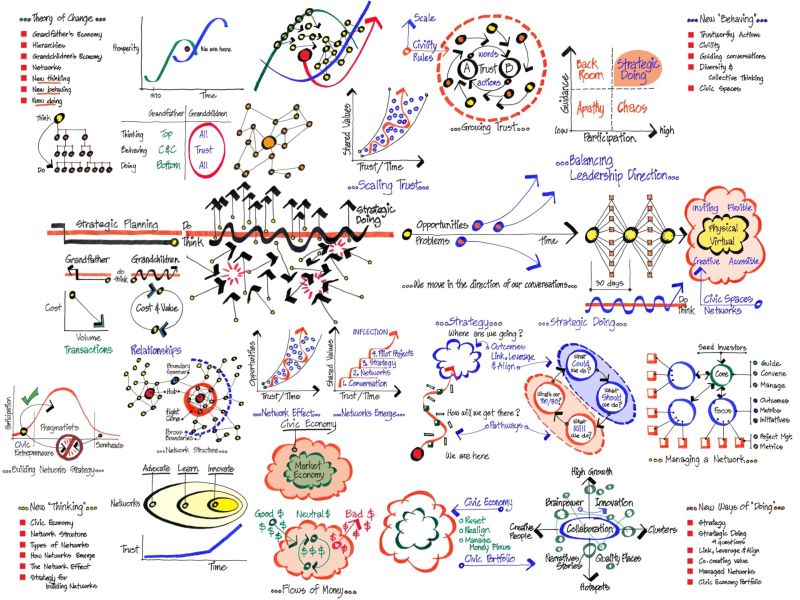Visual & Verbal Strategy Practice
Strategy practice now requires both verbal and visual language. Both must be clear and simple. But here’s the rub. Finding the simplicity on the other side of complexity is not easy.
After 10 years of development in my consulting practice and 15 years of testbeds at Purdue, we’ve designed a strategy practice that achieves both: verbal and visual simplicity.
WHY IT MATTERS
Complexity demands that we simplify. When we confront growing complexity, the last thing we need is more complexity.
In designing a strategy practice for open, loosely connected networks, we needed to avoid the trap of traditional strategic planning practices, which are often ineffective, expensive, and complicated.
DIG DEEPER: NETWORKS AND THE OBSOLESCENCE OF TRADITIONAL STRATEGY PRACTICES
In 1993, I set out to create a new approach to strategy, one specifically designed for open, loosely joined networks.
By the late 1980s, it was clear that strategic planning models — born in the 1960s and deeply grounded in industrial economics — were too cumbersome and costly for a world of networks and accelerating change.
The emergence of networks was easy to miss. I was fortunate. In 1984, as a member of the first consulting team to dive deeply into the Japanese auto industry, I learned how Mazda leveraged a network-based manufacturing model: faster, more productive.
“SEEING” NETWORKS AND THE VISUAL-VERBAL CONTINUUM
In her marvelous book Visual Thinking, Temple Grandin provides an insightful perspective on how our minds work.
She introduces us to the verbal-visual continuum. “Auditory sequential” thinkers are language based. “Visual spatial” thinkers are picture based.
Each of us falls somewhere along that continuum with most somewhere in the middle.
To define a new path for strategy in networks, we needed to develop both a verbal and a visual approach. The reason is simple. The networks we seek to design and guide are invisible. We cannot see them.
Strategy in networks, then, is not so much rocket science as molecular biology.
Cancer researchers rely on pictures of signaling pathways to understand the mechanism of cancer’s spread. In the same way, today’s leaders need to rely on pictures of our social networks to understand how to guide organizations.
VISUAL LANGUAGE FOR STRATEGY IN NETWORKS
This Friday, I will be talking with Kim Mitchell, the architect who helped me develop a visual language for strategy in open networks.
We’ll explore how pictures can help us address a major challenge in generating scholarly knowledge from strategy practice: translating implicit knowledge into explicit knowledge.
STRATEGIC DOING TALKS FRIDAY 9 AM NEW YORK – 3 PM CET
Strategic Doing Talks is a partnership with CONNECTS and the Strategic Doing Institute.
Could you join us this Friday? You’ll walk away with a deeper understanding of why visualizations are critical to today’s strategy practice.
I’ve put the connection details in the Comments section below.


The Founder of the Lab at UNA and co-author of Strategic Doing: 10 Skills for Agile Leadership, Ed’s work has focused on developing new models of strategy specifically designed to accelerate complex collaboration in networks and open innovation. He is the original developer of Strategic Doing.
